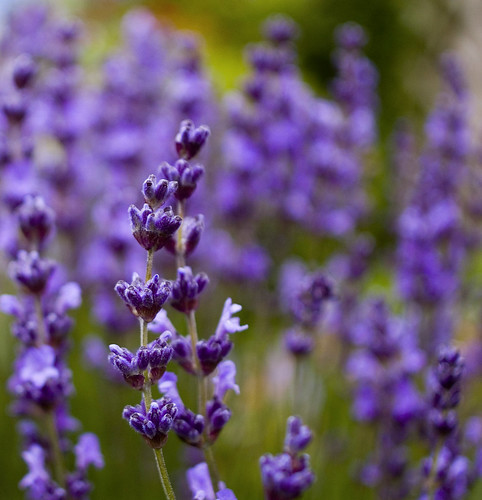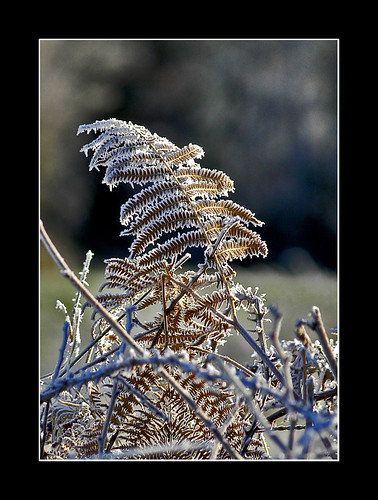Concrete
In contrary to the low expectations I had from Narciso Rodriguez for Her, which lead (after several twists and turns of the plot) to a surprising delight from what seemed to be just another non-descript trendy floral – the launch of Narciso Rodriguez for Him had at least a seed of expectations on my part. One would expect that it would do to Fougere what For Her did to Chypre – meaning: disregard it completely and instead, invent a new modern floral category (abstract musky floral). In the case of fougere (also a composition reliant on oakmoss, this time contrasted with lavender), one would anticipate we’ll see the birth of a musky lavender, something not all that far from Sarah Jessica Parker’s Lovely – but perhaps a bit masculinized.
However, I am sorry to report that none of that happened. I stepped into Holt Renfrew the other night accompanied by my brother Noam - a budding perfumista with a collection that could not embarrass a gentlemen twice his age (of course I will only take partial responsibility over his interest in fragrance). His immediate reaction was disgust (and we are talking about a young man who consents to the title fragrance whore –seriously, there is hardly anything he doesn’t like!).
From the moment For Him was sprayed on the paper stripe, I could not help but think of concrete. The opening notes are bizarre and somewhat disturbing. There is a hint of honey, reminiscent of the honey flower note in For Her. But one can tell right away that there is nothing groundbreaking about this fougere at all. Like most modern fougeres, the lavender is very refined, the oakmoss very subdued. Synthetic notes take over, usually with a metallic coolness that reflects more of the methods the scent was created (by machines) than the human inspiration (if there was any involved).
 To me, the scent just confirmed a strong connection to the bizarre choice of colour for the bottle – a concrete gray of the most depressing hue I’ve seen in a long time. If this was fabric, perhaps I would be able to find some comfort in it. But being made of a thick cold shiny glass makes one feel just that – cold and “correctic”. Nothing more. It seems Narciso Rodriguez has simultaneously run out of ideas for his bottle’s colors and the scent of their contents. They say a picture is worth a thousand words. And I think the posted ad for this fragrance says it all: it’s the cliché of a fragrance ad for men – chest exposed medium shot of a young man - nothing surprising, except, perhaps, the extremely dark thick hair and the supposedly-mysterious lack of eye contact.
To me, the scent just confirmed a strong connection to the bizarre choice of colour for the bottle – a concrete gray of the most depressing hue I’ve seen in a long time. If this was fabric, perhaps I would be able to find some comfort in it. But being made of a thick cold shiny glass makes one feel just that – cold and “correctic”. Nothing more. It seems Narciso Rodriguez has simultaneously run out of ideas for his bottle’s colors and the scent of their contents. They say a picture is worth a thousand words. And I think the posted ad for this fragrance says it all: it’s the cliché of a fragrance ad for men – chest exposed medium shot of a young man - nothing surprising, except, perhaps, the extremely dark thick hair and the supposedly-mysterious lack of eye contact.
If it was indeed inspired by the “great fougeres of the 80’s" than we must look back and try to remember these. Cool Water by Davidoff comes to mind, with its antiseptic Jacuzzi cleaner sillage and metal bladed breath. Anything inspires by that (or the 80’s, for that matter) is likely to make me shudder… Considering that real, sophisticated, original fougeres are originated in the 80’s of the previous century, it does make one wonder.
For Him opens with a disturbing bouquet of both dry cement and wet concrete, unrecognizable  spices and a honey note. The intrigue dissipates quickly when the scent becomes a familiar, I’ve-smelled-this-before modern fougere accord – a hint of fake herabceous water, some non-descript fruity sweetness that is fortunately not quite nausearing, but just almost (it reminds me quite a bi t of the sweetness of Jean-Payl Gaultier for men, only with the sillage toned down 10 fold); a glimpse of violet leaf coolness and a certain smokiness that my brother describes as ‘ashtray smell” but at the same time he also detects some good smelling fresh herb notes. The dry down settles within about an hour – a close to the skin, rather soft, undecisive mélange of amber and musk (it is also said to contain patchouli, but I can’t say I am recognizing any). Nothing offensive in the drydown, and the sillage is soft and non overpowering – the contrary of what I’ve expected after the magical sillage and staying power of For Her (it has a tendency to stay everywhere after it was applied, and even withstand a laundry – yet it does it with a nice touch of mischevious elegance – almost like Josephine’s deliberate musk contamination before leaving Napoleon’s palaces). The only thing that truly stands out (if you take a very close look) is an animalic ambergris note, somewhat fecal, but with such low-key vibrations it can never offend and unelss you’ve smelled it before it would be very hard to put your finger on it. It reminds me of l’Antimateirer; unfortunately, in this instance one needs to wait a long time for it to emerge. And this might just be its chance for success.
spices and a honey note. The intrigue dissipates quickly when the scent becomes a familiar, I’ve-smelled-this-before modern fougere accord – a hint of fake herabceous water, some non-descript fruity sweetness that is fortunately not quite nausearing, but just almost (it reminds me quite a bi t of the sweetness of Jean-Payl Gaultier for men, only with the sillage toned down 10 fold); a glimpse of violet leaf coolness and a certain smokiness that my brother describes as ‘ashtray smell” but at the same time he also detects some good smelling fresh herb notes. The dry down settles within about an hour – a close to the skin, rather soft, undecisive mélange of amber and musk (it is also said to contain patchouli, but I can’t say I am recognizing any). Nothing offensive in the drydown, and the sillage is soft and non overpowering – the contrary of what I’ve expected after the magical sillage and staying power of For Her (it has a tendency to stay everywhere after it was applied, and even withstand a laundry – yet it does it with a nice touch of mischevious elegance – almost like Josephine’s deliberate musk contamination before leaving Napoleon’s palaces). The only thing that truly stands out (if you take a very close look) is an animalic ambergris note, somewhat fecal, but with such low-key vibrations it can never offend and unelss you’ve smelled it before it would be very hard to put your finger on it. It reminds me of l’Antimateirer; unfortunately, in this instance one needs to wait a long time for it to emerge. And this might just be its chance for success.







